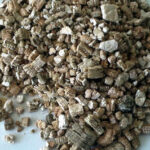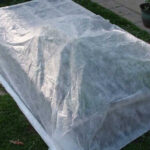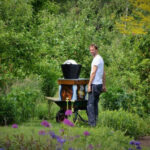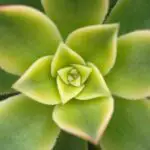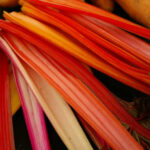Growing fava beans is an easy and fun way to try a legume plant in your garden. Fava bean plants love a cool season like early spring, and they’ll overwinter if planted in fall. They have edible leaves and tons of vegetable companions. Their gorgeous spreading foliage is sure to provide nutrients to you and the earth.
Favas are a great addition to a vegetable garden as a food or cover crop. People worldwide love the plant and grow fava beans for their legume or green foliage. Large beans like favas are full of nutrition, and eating them provides tons of potassium. They’re a great source of iron and magnesium too. It’s no wonder there are so many types of fava as its cultivation is traced back at least 6000 years.
Favas aren’t for everyone, though. Certain people experience a condition known as favism which can cause hemolytic anemia, a blood disorder that prevents oxygen from getting to the body’s cells. Because this can be contracted just by being near a field of favas and inhaling pollen, people with the gene predisposed to favism should garden with other legumes like chickpeas instead. Find out if favas are right for you before you decide to try them.
Quick Care Guide

| Common Name(s) | Broad bean, fava bean, faba bean |
| Scientific Name | Vicia faba |
| Days to Harvest | 75 to 100 days |
| Light | Full sun to partial shade |
| Water | 1 inch per week |
| Soil | Average, well-drained |
| Fertilizer | Minimal, low-nitrogen, with added sulfate forms of sulfur |
| Pests | Aphids, leaf miners, thrips, Mexican bean beetle, spider mites |
| Diseases | Broad bean chocolate spot, rust, powdery mildew, fusarium root rot, mosaic virus |
All About Fava Beans
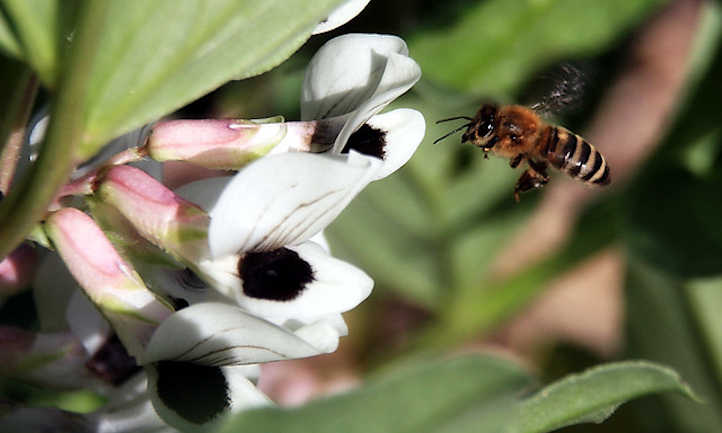
Fava beans or Vicia faba are legumes that love cool weather. Also known as broad beans or faba beans, these plants are usually used as a cover crop to prep a garden bed so the soil can be worked in future growing seasons. There’s an extra benefit to those who manage a fava bean harvest too! Mature beans and tender green leaves of favas are great to eat.
Fava beans originate either in the Mediterranean or Central Asia. Today, there is no evidence of wild cultivation since only the cultivar remains. In Sicily, favas are believed to have magical properties. Residents there honor St. Joseph by placing fava beans at the foot of his likenesses on March 19th. Legend suggests he made it rain during an extensive drought that struck Sicily in the middle ages. Fava beans were one of the few crops to survive the drought. Today, they are a prized plant in California and they are loved all over the world.
Fava bean plants are stark, ranging from 2 feet to 6 feet tall. Leaves are arranged in leaflets on either side of a central stem, and foliage is silvery green. Flowers have standard, wing, and keel petals that range from white to crimson. Fava wing petals have characteristic black spots. After they bloom and fade seed pods form. Mature green pods can grow to over six inches long as they fill with delicious lime-colored broad seeds akin to lima beans. Unlike other beans, these plants grow tall instead of vining.
Greens and beans are what people eat for food, but all foliar, fruit, and flower parts of favas are edible. The stems and pod shells are not consumed due to their toughness, but they can be digested. Each fava plant can produce up to 180 beans.
One interesting variety of fava beans is called Extra Precoce Violetto. This early assortment is happiest in spring and takes over an area of your garden if you let it. From the outset through flowering, Violetto looks just like a regular fava plant. Broad beans produced from this cultivar vary in color from light tan to dark violet.
Planting Fava Beans
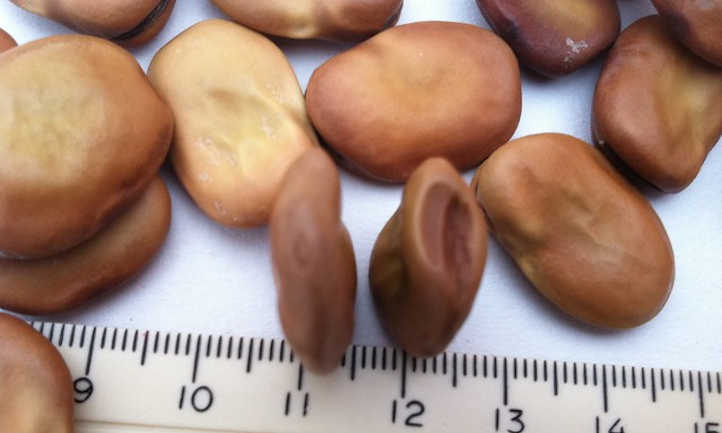
A young fava bean plant appreciates installation at the beginning of spring or late winter as soon as the soil warms up and can be worked. Fava beans planted at this time cultivate quickly and finish growing in early summer. As an alternative to early varieties, you can plant favas in fall and overwinter them.
Fava beans grow best in well-drained loam but will do just fine in average garden soil. They prefer full sun to partial shade.
Most varieties spread out, which makes them difficult to keep in containers. Sow seeds in raised beds or garden ground. There are dwarf varieties like Bell Bean that easily grow in containers.
Start seeds either indoors in starting trays or outdoors 4 to 6 inches apart in rows 18 to 36 inches apart, 1 to 2 inches deep. If you plant seeds too deep or not deep enough they won’t germinate and root properly. If you start seeds indoors, bring them outside within 2 weeks of germination as they grow quickly.
Planting these in the fall as a winter cover crop can improve spring gardening as they can boost the nitrogen in your soil. It’s recommended to inoculate your bean seed with Rhizobium leguminosarum, a seed inoculant that will help them in this task. If you have not previously inoculated either your growing medium or a prior crop of seed planted in it, definitely purchase some legume inoculant for the best nitrogen-boosting capability.
Care
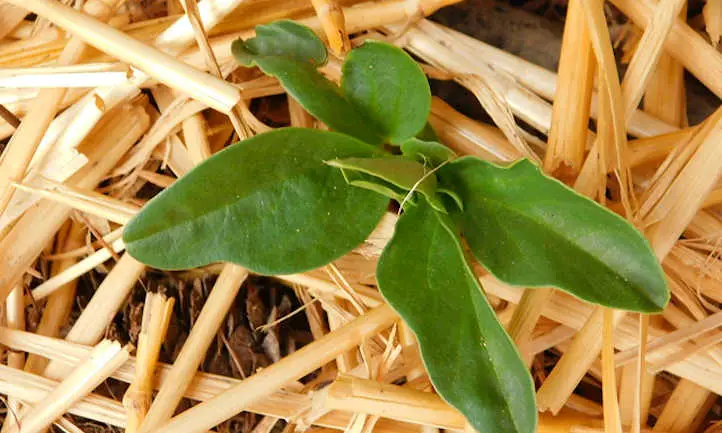
Fava beans are not fussy, especially if they can spread out in your garden. Planting and maintaining these plants for a season is sure to be an enjoyable venture, as long as you give them a good foundation.
Sun and Temperature
Favas need full sun to partial shade in 60 to 65 degrees. Though some varieties are frost-resistant, most fava bean cultivars can handle cold as low as 40 degrees on average. At 75 degrees, plant production increases as fava proceeds to end its life cycle. They’re best planted in zones 6 and higher. They need a long, cool growing season to produce properly. If you grow a variety that isn’t frost hardy, use a frost cloth to cover tender greens in a snap freeze. Non-heat-resistant varieties will need shade cloth in heatwaves.
Water and Humidity
Water favas in the morning or at dusk. Give them at least one inch of water per week. We recommend drip irrigation because water on fava foliage causes mildew. Overly wet seasons may cause favas to have issues with root rot, so if there is an exceptional amount of rainy weather avoid watering. Check the top two inches of the soil to determine if watering is needed.
Soil
Favas prefer well-drained, silt-loam to loamy soil. One important aspect of fava growing is maintaining the proper soil pH. Plant seeds in areas with a pH of 6 to 6.5. Soils that have a pH of 5.6 or lower should be amended with lime or wood ash. Though it’s not absolutely necessary, you can amend a growing medium with compost to give your plants a boost.
Fertilizing

Favas are nitrogen-fixing plants if they’ve been inoculated with rhizobium. If they have not been, they still are somewhat nitrogen-fixing but not as effective.
Though they don’t need much in the way of nitrogen, they do require potassium and phosphorous. A low-nitrogen fertilizer is an effective solution for this, as it provides the additional PK required. Sulfate forms of sulfur are also important to these beans, so choosing a fertilizer that includes soluble sulfur is a good idea.
Heavily-diluted foliar feeds are effective, but many bud and bloom-oriented granular organic fertilizers are also a good option. Slow-release fertilizers should be applied at or before planting.
Pruning/Training
At about six weeks, prune off the top few inches above the leaf node. Include flowers in this process, which promotes growth. You can eat the pruned leaves just as you would any hardy green. Fava flowers are also edible. When you’ve harvested all you can for the fall season and the pods are beginning to turn dark brown, chop them down to six inches above the ground to survive winter. If you planted them in spring, remove all the foliage above the ground and leave the roots. The remnants of the fava plants provide root affixing for vegetables planted thereafter. Although they are not climbing beans, provide them with a trellis or stake them to prevent them from bending toward the ground as pods form.
Propagation
Seeds are the only mode of propagation for favas.
Harvesting and Storing

Favas last long once they are harvested, which is why they are so prized among gardeners and chefs alike. Once you extract beans from their pods, you’ll have a chance to eat and plant more favas in cool weather seasons ahead.
Harvesting
Harvest young and mature leaves throughout the growth cycle. To harvest mature pods, wait until they are long and shiny green. Don’t wait too long or the pods will be tough and beans will be too tough to eat. Those harvested too late can be used for gardening in the seasons ahead.
Eat immature pods whole when they’re thin and about 3 inches long. For beans only, shuck the pod to access the beans within. Pull the middle strip down from the tip of the pod. Then shell the beans by blanching them. Boil them for up to one minute and dunk them in ice water to end the cooking process. Squeeze each bean and they will come out of their shell, at which point you can enjoy these tender morsels!
Storing
Immature pods, flowers, and leaves should be eaten on the day you harvest them. Fresh fava beans keep in a plastic bag in the refrigerator for about ten days. Eating fresh beans as quickly as possible is important.
For longer-term storage, wait until each pod is dry to the touch. Shell the beans and lay them on cardboard or newspaper in a warm dry place for a few weeks. This allows them to fully dry out. Store in airtight containers until needed.
Freeze fresh fava beans and you’ll have them for 6 to 8 months. If you store dried favas, they’ll keep in a glass jar or airtight container for two to three years.
Troubleshooting
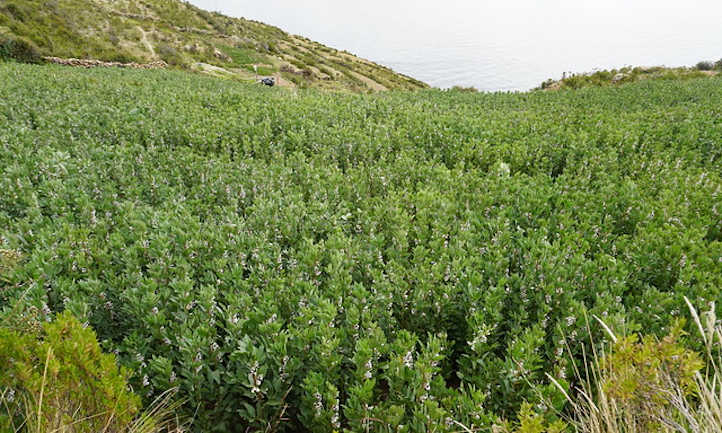
Working favas in cool weather makes vegetable gardening seem easy. But there are a few conditions that can invite issues, disease, and pests.
Growing Problems
Fava beans are sensitive to high heat conditions and will die out rapidly during a heatwave if left fully exposed to sunlight. In weather that’s consistently over 80 degrees, fava bean flowers will become sterile. Provide shade cloth to reduce the UV pressure on the plants and to offer slightly cooler temperatures.
When the temperature is too cold, fava leaves may blacken from frost damage. This may not kill a strong plant, but it may look horrible. Using frost cloth during particularly chilly weather is recommended.
Pests
Aphids, leaf miners, and thrips suck sap from fava leaves and cause structural damage as they go. Most of the time, the presence of these pests in the garden is minimal and is an indication that you have healthy plants. If these sap-suckers haven’t overrun the area, simply prune off infested leaves and dispose of them in the trash. In heavier infestations, introduce beneficial insects like lacewings or ladybugs which naturally prey on all three insects. Manage large infestations with neem oil or insecticidal soap.
The Mexican bean beetle or Epilachna varivestis feeds on the undersides of leaves and causes lesions that are eventually visible from the top. Hand-picking is the best acute treatment for bean beetles. Remove them by hand and drop them in soapy water. If an infestation presents itself, use insecticidal soap to prevent further damage.
Spider mites weave thin webs and feed on the leaf surface leaving behind dappled yellow and white bruises. If they get out of hand, they can cause leaf collapse. Try predatory beneficial insects like those mentioned above, or use insecticidal soap or neem oil.
Bad infestations of any of these pests can be treated with pyrethrin or spinosad sprays, both of which are stronger organic solutions.
Diseases
Broad bean chocolate spot is caused by the fungus Botrytis cinerea. Small brown lesions form on leaves and spread to the stem and flower in highly humid conditions. Control this fungus culturally through proper spacing. Copper fungicide sprays control more aggressive stages.
Broad bean rust is a fungal disease caused by the Uromyces viciae-fabae pathogen. Spots form on leaf surfaces and eventually turn a rusty color and cause leaf collapse. This occurs in high humidity environments or in prior infected soil. Practice crop rotation so that you don’t plant your favas in the same spot two years in a row. Provide ample airflow to reduce humidity around plants. While it’s not 100% effective, copper fungicide can slow the spread, giving you time to remove infected leaves and destroy them. Do not compost material with this rust.
Powdery mildew is a fungal disease that develops when favas are planted too close to one another and days are warm and humid. There are many treatments for powdery mildew, but neem oil or copper fungicides are the most effective. Make sure your beans have enough airflow to reduce the humidity around them.
Fusarium root rot is a fungal disease that becomes prominent in situations where the growing media is not well-draining. The fungus thrives in soggy, warm conditions. This soilborne pathogen is hard to combat, but some mycorrhizae are being shown to be somewhat effective if applied early on. Ensure your plants have enough drainage to protect their root system. Do not water during rainy weather.
Mosaic virus is spread by pests like aphids that carry the viral pathogen. Leaves on an infected plant grow in a distorted manner and are unable to absorb nutrients that otherwise healthy leaves would. The virus also causes abnormal flower growth and sterilizes plants. There is no cure for mosaic viruses, so the best course of action is prevention. Handle pest outbreaks swiftly to reduce the risk. Remove and destroy virus-infected plants.
Frequently Asked Questions
Q: Do fava beans need a trellis?
A: Although they’re mostly upright, favas do enjoy the support from a trellis when their pods form. This keeps them from leaning and touching the ground.
Q: How long do fava beans take to grow?
A: Favas grow in about 75 to 100 days.


